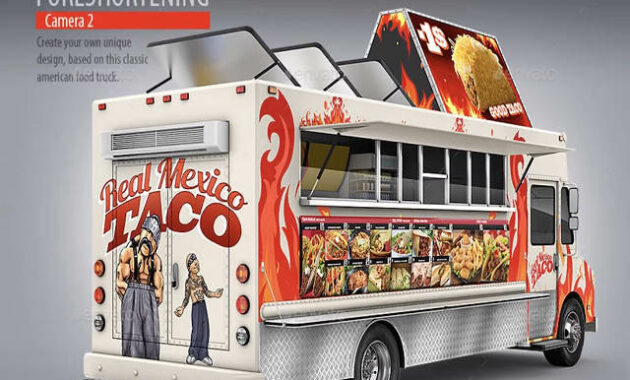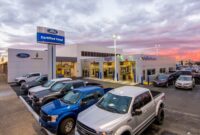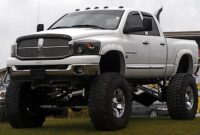Food Truck Design Software: Crafting Your Mobile Culinary Dream sale.truckstrend.com
The aroma of sizzling street food, the vibrant graphics on a mobile kitchen, the buzz of a crowd gathered around a unique culinary experience – food trucks have revolutionized the dining landscape. What was once a humble cart has evolved into sophisticated, custom-built kitchens on wheels, capable of delivering gourmet meals anywhere. But behind every successful food truck is meticulous planning and design, a process increasingly streamlined and perfected by Food Truck Design Software.
This comprehensive article delves into the world of food truck design software, exploring its definition, indispensable role, key features, practical application, and vital considerations for anyone looking to transform their culinary vision into a mobile reality.
Food Truck Design Software: Crafting Your Mobile Culinary Dream
What is Food Truck Design Software?
At its core, food truck design software refers to a category of digital tools and applications that allow aspiring food truck owners, designers, and manufacturers to plan, visualize, and optimize the layout and functionality of a mobile kitchen. Far from simple drawing programs, these sophisticated platforms often incorporate elements of Computer-Aided Design (CAD), 3D modeling, and specialized modules to address the unique challenges of a compact, moving culinary space.
Instead of traditional blueprints and manual sketches, which are prone to errors and difficult to modify, this software provides a dynamic, interactive environment. Users can experiment with different layouts, place equipment, design utility systems, and even visualize the aesthetics of their truck’s exterior, all before a single piece of metal is cut or a pipe is laid.
Why is Food Truck Design Software Essential?
The journey from a food concept to a fully operational food truck is fraught with complexities. Space is at a premium, regulations are stringent, and every inch must be utilized efficiently. This is where food truck design software becomes not just helpful, but absolutely essential.
- Precision and Efficiency: Manual design is time-consuming and prone to human error. Software offers unparalleled precision, allowing designers to work with exact measurements, ensuring all components fit perfectly within the confined space. This reduces costly mistakes and rework during construction.
- Visualization and Iteration: Seeing is believing. 2D layouts can be hard to interpret, but 3D models provide a realistic view of the final product. This allows owners to "walk through" their truck virtually, identify potential bottlenecks, and make necessary adjustments before construction begins. The ability to quickly iterate on designs saves immense time and resources.
- Compliance with Regulations: Food truck operations are heavily regulated by health departments, fire marshals, and local zoning laws. These regulations dictate everything from ventilation requirements and plumbing specifics to electrical loads and material choices. Many software solutions incorporate features or templates that help ensure designs meet these stringent codes, minimizing the risk of costly delays or rejections.
- Optimized Workflow and Ergonomics: A well-designed food truck optimizes the workflow of the kitchen staff. Software allows for the strategic placement of equipment, prep stations, and serving windows to create an ergonomic and efficient work environment, reducing staff fatigue and speeding up service.
- Cost Savings: By identifying design flaws early, reducing material waste, and streamlining the construction process, design software contributes significantly to cost savings. It helps avoid expensive change orders and ensures that the final build aligns with the initial budget.
- Enhanced Communication: A 3D model is a universal language. It allows for clear communication between the food truck owner, designer, fabricator, and even potential investors or loan officers, ensuring everyone is on the same page about the project’s scope and vision.
- Customization and Brand Identity: Food trucks are an extension of a brand. The software allows for complete customization, from the internal layout to the external graphics, ensuring the truck not only functions perfectly but also embodies the unique identity and aesthetic of the culinary business.


Key Features to Look for in Food Truck Design Software
While specific features vary, a robust food truck design software should ideally offer the following capabilities:
- CAD and 3D Modeling: The foundational feature, enabling precise 2D drafting and realistic 3D visualization of the truck’s interior and exterior.
- Extensive Equipment Libraries: A pre-built library of common food service equipment (grills, fryers, refrigerators, sinks, ventilation hoods) with accurate dimensions and specifications. The ability to import custom models is also a plus.
- Layout and Drag-and-Drop Functionality: Intuitive tools to easily arrange and rearrange equipment, countertops, and storage units within the truck’s shell.
- Utility System Design: Modules for planning electrical wiring, plumbing (fresh and wastewater tanks, sinks), and gas lines, ensuring proper sizing, placement, and safety.
- HVAC and Ventilation Planning: Tools to design and calculate appropriate ventilation systems (exhaust hoods, fans) to meet health codes and ensure a comfortable working environment.
- Material Selection and Texturing: Options to apply various materials (stainless steel, diamond plate, wood) and textures to visualize the final look and feel of the truck.
- Collision Detection and Clearance Checks: Automated alerts if components overlap or if there isn’t enough clearance for doors, drawers, or personnel movement.
- Reporting and Bill of Materials (BOM): The ability to generate reports on equipment lists, material quantities, and overall dimensions, which are crucial for budgeting and ordering.
- Rendering and Walkthroughs: High-quality rendering capabilities to create photorealistic images and virtual walkthroughs of the designed space.
- Collaboration Features: Cloud-based sharing and multi-user editing to facilitate teamwork between owners, designers, and fabricators.
- Compliance Checklists (Optional but Valuable): Some advanced solutions may offer integrated checklists or warnings based on common health and safety regulations.

How to Use Food Truck Design Software: A Step-by-Step Guide
While software interfaces differ, the general workflow for designing a food truck remains consistent:
- Define Your Concept & Needs: Before touching the software, clearly outline your menu, expected volume, and the specific equipment required. This dictates the size and layout of your truck.
- Choose Your Base Vehicle/Shell: Start by importing or drawing the dimensions of your chosen truck or trailer shell. This establishes the fixed boundaries of your design.
- Layout the Core Kitchen Area: Begin by placing your largest, most essential equipment (e.g., range, fryer, refrigerator). Consider the "workflow triangle" (storage, prep, cooking) to minimize movement.
- Incorporate Prep & Serving Stations: Add countertops, cutting boards, and designated prep areas. Position your serving window strategically, keeping customer flow in mind.
- Design Utility Systems:
- Plumbing: Place sinks (hand wash, three-compartment, utility), water heaters, and fresh/grey water tanks. Plan pipe routing.
- Electrical: Map out outlets, lighting, and power sources for each piece of equipment. Calculate the total electrical load.
- Gas: If using propane, plan the location of tanks and gas lines to appliances.
- Ventilation: Position exhaust hoods directly over cooking equipment and plan the ducting system.
- Add Storage & Ancillary Items: Incorporate shelves, cabinets, dry storage, and fire extinguishers. Don’t forget space for POS systems, waste bins, and a first-aid kit.
- Optimize Ergonomics & Flow: Review the layout for ease of movement, sufficient aisle space, and comfortable working heights. Imagine your staff operating during peak hours.
- Design the Exterior (Branding): Apply textures, colors, and graphics to the exterior of the truck. This is where your brand identity comes to life.
- Review, Render & Refine: Generate 3D renderings and virtual walkthroughs. Share them with stakeholders for feedback. Make necessary adjustments until the design is perfect and meets all requirements.
- Generate Documentation: Create detailed plans, equipment lists, and material specifications for your fabricator and for permit applications.
Important Considerations When Choosing Software
Selecting the right software is crucial for a smooth design process:
- Ease of Use vs. Features: Are you a design novice or an experienced CAD user? Simpler, cloud-based tools are easier to learn but might lack advanced features. Professional CAD software offers immense power but has a steeper learning curve.
- Cost: Software can range from free/freemium models (like SketchUp Free) to thousands of dollars for professional licenses. Consider subscription vs. one-time purchase.
- Specific Food Truck Modules: While dedicated "food truck design software" is rare, look for general CAD software with extensive libraries, templates, or add-ons that cater to commercial kitchens or mobile units.
- System Requirements: Ensure your computer has the necessary processing power, RAM, and graphics capabilities to run the software smoothly, especially for 3D rendering.
- Community and Support: A strong user community, online tutorials, and responsive customer support can be invaluable, especially when encountering challenges.
- Integration: Can the software export files in formats compatible with other programs your fabricator might use (e.g., DXF, DWG)?
Challenges and Solutions
- Steep Learning Curve: Many professional design tools require significant time to master.
- Solution: Start with simpler, more intuitive software (e.g., SketchUp, RoomSketcher) or invest in online courses/tutorials. Consider hiring a professional designer for complex projects.
- High Software Cost: Professional licenses can be expensive.
- Solution: Explore free/open-source alternatives, look for student/educational licenses, or consider a monthly subscription if you only need it for a short period.
- Keeping Up with Regulations: Health codes and fire safety regulations vary by location and can change.
- Solution: Always consult with local health departments and fire marshals early in the design process. Use software as a tool for visualization, but never as a substitute for professional regulatory advice.
Tips for Effective Food Truck Design
- Prioritize Workflow: Design the kitchen around the movement of your staff and ingredients. Minimize steps and avoid bottlenecks.
- Embrace Ergonomics: Ensure comfortable working heights, adequate aisle space, and easy access to all equipment to prevent injury and fatigue.
- Focus on Compliance First: Integrate health and safety regulations from the very beginning. This will save immense time and money down the line.
- Think Long-Term: Design for durability, ease of cleaning, and future maintenance. Consider how easy it will be to replace or repair components.
- Future-Proof Your Design: Can your truck adapt if your menu evolves slightly? Is there room for minor equipment upgrades?
- Get Feedback: Share your 3D models and plans with experienced food truck operators, chefs, and even potential staff for their insights.
- Don’t Forget the Exterior: The visual appeal of your truck is paramount for attracting customers. Integrate branding elements seamlessly into the design.
Food Truck Design Software: Hypothetical Pricing Table
As "Food Truck Design Software" often refers to the application of general design tools, this table reflects common pricing models for relevant software types.
| Software Category | Type (Deployment) | Key Features | Price (Approximate) | Target User |
|---|---|---|---|---|
| Entry-Level 3D CAD/Layout | Cloud/Desktop | Intuitive 3D modeling, drag-and-drop equipment, basic rendering, pre-made templates, good for quick layouts and visualization. | Free (limited) – $20-$50/month or $200-$500/year | Aspiring owners, small businesses, conceptual design, basic visualization. |
| Mid-Range Professional CAD | Desktop | Advanced 3D modeling, precise measurements, extensive libraries, detailed utility planning, custom component creation, professional rendering. | $50-$200/month or $500-$2,000/year | Experienced designers, fabricators, dedicated food truck builders, complex custom designs. |
| High-End Architectural/MEP CAD | Desktop | Full architectural suite, HVAC, plumbing, electrical design tools, BIM capabilities, highly accurate and complex system modeling. | $200-$500+/month or $2,000-$5,000+/year | Large-scale manufacturers, engineering firms, highly specialized and regulated builds. |
| Specialized Module/Template Kit | Add-on/Template | Pre-built food truck shells, equipment sets, and regulatory compliance templates designed to integrate with existing CAD software. | $100-$1,000 (one-time purchase or annual add-on) | Users of general CAD software who want to accelerate food truck specific design. |
| Online Visualizers/Planners | Cloud | Simple drag-and-drop interfaces, limited customization, primarily for basic layout and conceptual ideas. | Free (basic) – $10-$30/month | Very early-stage planners, non-designers, quick concept testing. |
Note: Prices are hypothetical and can vary significantly based on vendor, features, subscription model, and regional pricing.
Frequently Asked Questions (FAQ)
Q1: Do I need prior design experience to use food truck design software?
A1: It depends on the software. Entry-level tools are often very intuitive and require little to no prior experience. Professional CAD software, however, has a steeper learning curve and benefits from prior design knowledge. Many offer tutorials and active communities to help you learn.
Q2: Is food truck design software expensive?
A2: The cost varies widely. Some basic online tools offer free tiers, while professional software can range from tens to hundreds of dollars per month, or thousands for a perpetual license. Your budget and the complexity of your design will determine the best fit.
Q3: Can this software help me get permits and pass inspections?
A3: Directly, no. The software helps you create designs that comply with regulations by allowing precise measurements and utility planning. However, you will still need to submit your plans to local health departments and fire marshals for approval. The detailed plans generated by the software will be invaluable for this process.
Q4: What’s the best software for food truck design?
A4: There’s no single "best" software. Popular choices often include general 3D modeling tools like SketchUp, AutoCAD, or Fusion 360, which can be adapted for food truck design. The "best" depends on your budget, technical skill, and the complexity of your project. For simple layouts, an online visualizer might suffice. For detailed, professional builds, a robust CAD program is necessary.
Q5: Can I design the exterior branding with this software too?
A5: Yes, most 3D design software allows you to apply textures, colors, and even import graphic files (like logos) onto the exterior surfaces of your truck model, giving you a complete visual representation of the final product.
Q6: How long does it take to design a food truck using software?
A6: The time varies greatly based on the complexity of your design, your familiarity with the software, and the number of iterations. A basic layout might take a few hours, while a detailed, fully engineered design with all utility systems could take days or even weeks.
Conclusion
Food truck design software is more than just a digital drawing board; it’s a powerful enabler for culinary entrepreneurs. By providing precision, visualization, and efficiency, it transforms the daunting task of building a mobile kitchen into a streamlined, cost-effective process. From ensuring regulatory compliance to optimizing workflow and bringing a unique brand identity to life, these tools are indispensable in today’s competitive food truck landscape. Investing in the right software, or the expertise of someone who uses it, is not merely an expense but a strategic decision that lays the foundation for a successful, safe, and mouth-watering mobile culinary adventure.




